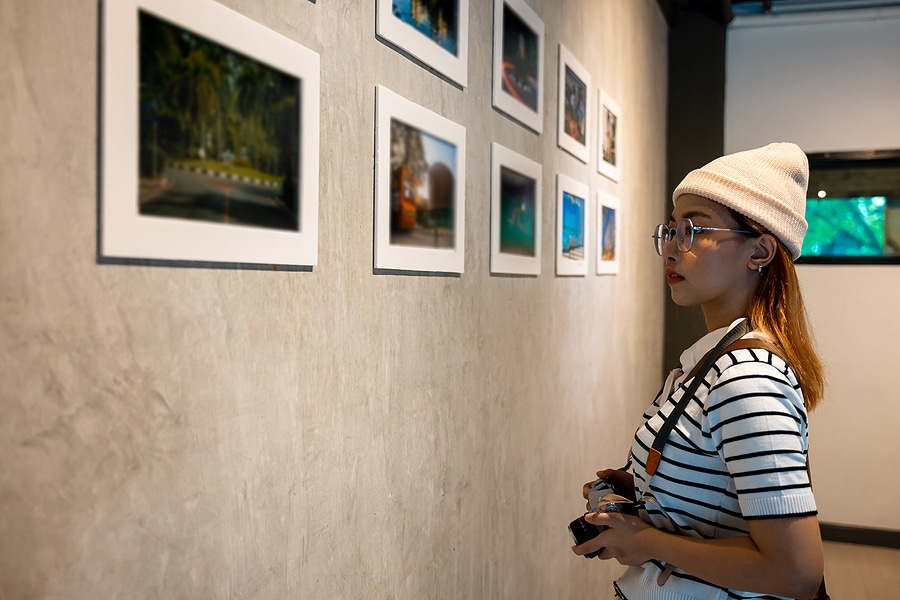Angelica Kauffman (1741-1807) was one of just two female artists among the 34-strong group who founded the Royal Academy of Arts in 1768, yet it has taken until 2024 for her to be awarded her own exhibition. The Times reports that Kauffman was primarily a portrait painter who excelled at self-portraits.
The Royal Academy of Arts (RA) was established in London as a training school for artists, and it was the first art school to receive royal endorsement from the then king, George III.
Ironically, it is likely that Kauffman and fellow female artist Mary Moser would have been forbidden from attending the Academy’s life drawing classes, because it was deemed improper for ladies to work from nude models. This did not prevent Kauffman from becoming one of the most celebrated and sought-after artists of her day.
The RA exhibition includes preparatory sketches and portraits, self-portraits, and history paintings. Kauffman was born in Switzerland and her father was the muralist Johann Joseph Kauffman, who travelled extensively throughout Europe to complete commissions.
Kauffman senior taught his daughter the fundamentals of painting and she proved to be highly talented, and was capable of producing commissioned portraits by her early teens. Spells working in Rome and Austria allowed her to become familiar with classical and Renaissance painting and to gain an understanding of Neoclassicism.
By her early twenties, Kauffman was an accomplished portrait painter who was fluent in four European languages, which helped her to form an extensive and elite social network. She moved to London in her twenties, and was soon in demand as a portrait painter to the rich and famous, including aristocrats and the monarchy.
As well as celebrity portraits, Kauffman specialised in history paintings that referenced Greek mythology and religion and literature. She particularly focused on female heroines such as Penelope, wife of Odysseus, and Eleanora, the wife of Edward I, giving them a prominence in art that was rarely afforded by the male artists of the day.
The critics did not view Kauffman’s work as particularly groundbreaking, as although she favoured female heroines she tended to portray them through the conventional gender norms of society, rather than ask questions or push against them.
However, the fact that she rose to be the most famous portraitist of her day in an art world that was overwhelmingly dominated by men is remarkable, and reason enough to celebrate her work and career. She was also very interested in exploring her own image with self-portraits, and these are considered to be among her finest works.
Perhaps inevitably, there was some gossip about Kauffman’s relationship with fellow male artists, particularly Joshua Rynolds with whom she had a close friendship. However, she was a strong and spirited character who was able to overcome the sniping, and she had a long and successful career.
Despite this, history has not paid Kauffman her due as an artist, while her male contemporaries such as Reynolds and Jacque-Louis David are much better known. Some art historians are now belatedly recognising her achievements and she has begun to receive more critical attention.
Also exhibiting at the RA right now is Lord Frederic Leighton’s painting Flaming June (oil on canvas, 1895). It is one of the world’s most iconic paintings, featuring a sensual portrait of a sleeping woman with flowing red hair and wearing a diaphanous orange dress. Just visible in the background is a glittering Mediterranean sea and some blooming flowers.
The sleeping beauty is not a heroine of literature or classical mythology, which was usual for the era it was painted, but is an anonymous young woman. This reflected the artist’s view that art should be for its sake, rather than representational.
The slumbering serenity of the woman and the vibrant colours have become one of the most recognisable and reproduced images of modern times. The painting is almost four feet tall, and displayed in a very substantial and elaborate gold frame, lending it a huge and immediate visual impact.
The harmony of the vivid dress and hair colour and the sense of intimacy created by the subject continue to enchant modern viewers.
If you have work by a fierce female artist to celebrate, drop into our framing shop in east London for friendly and expert advice.
